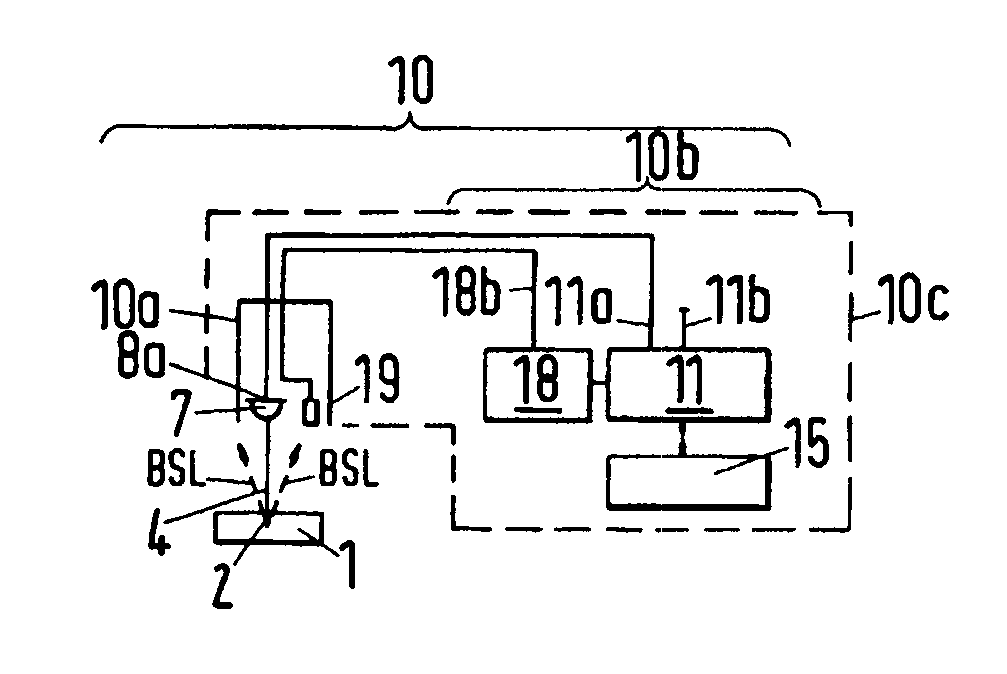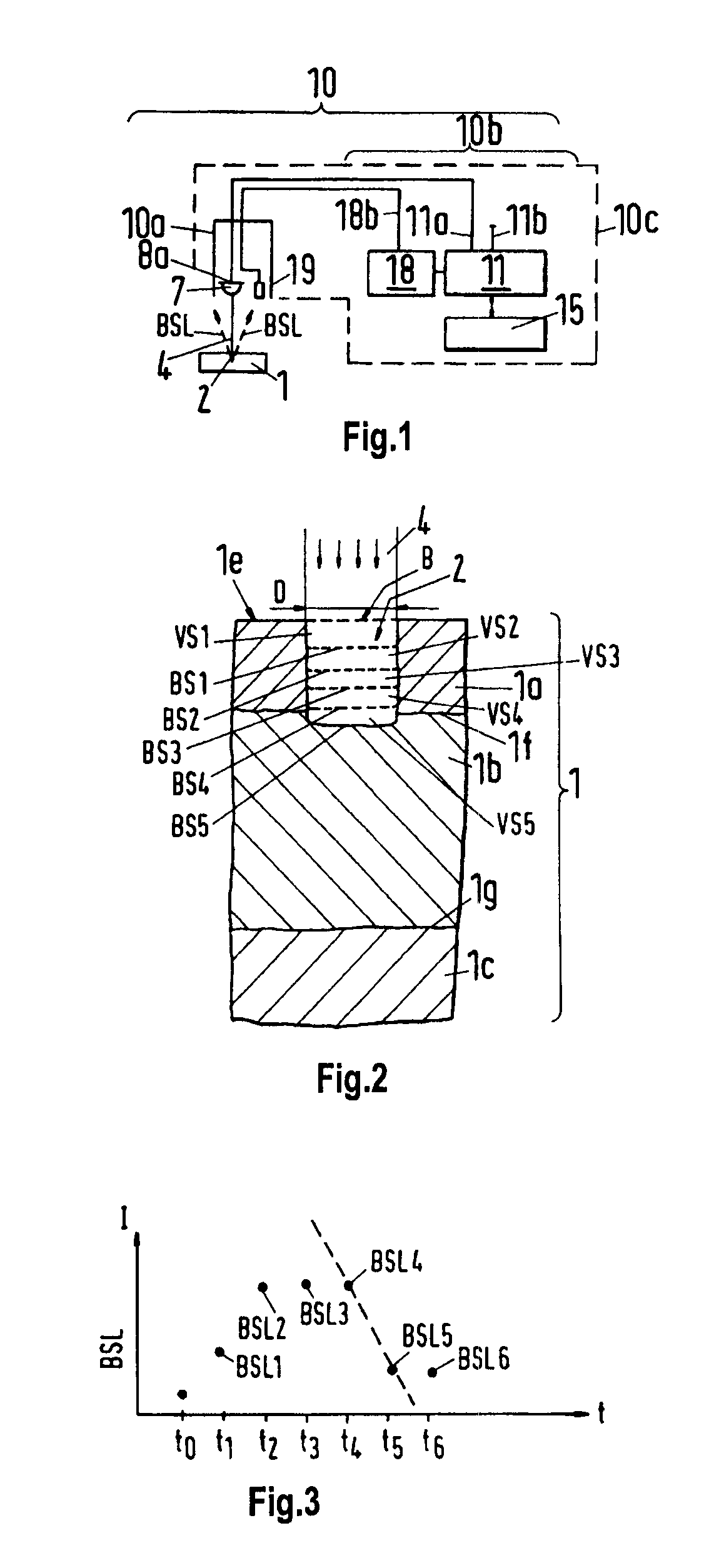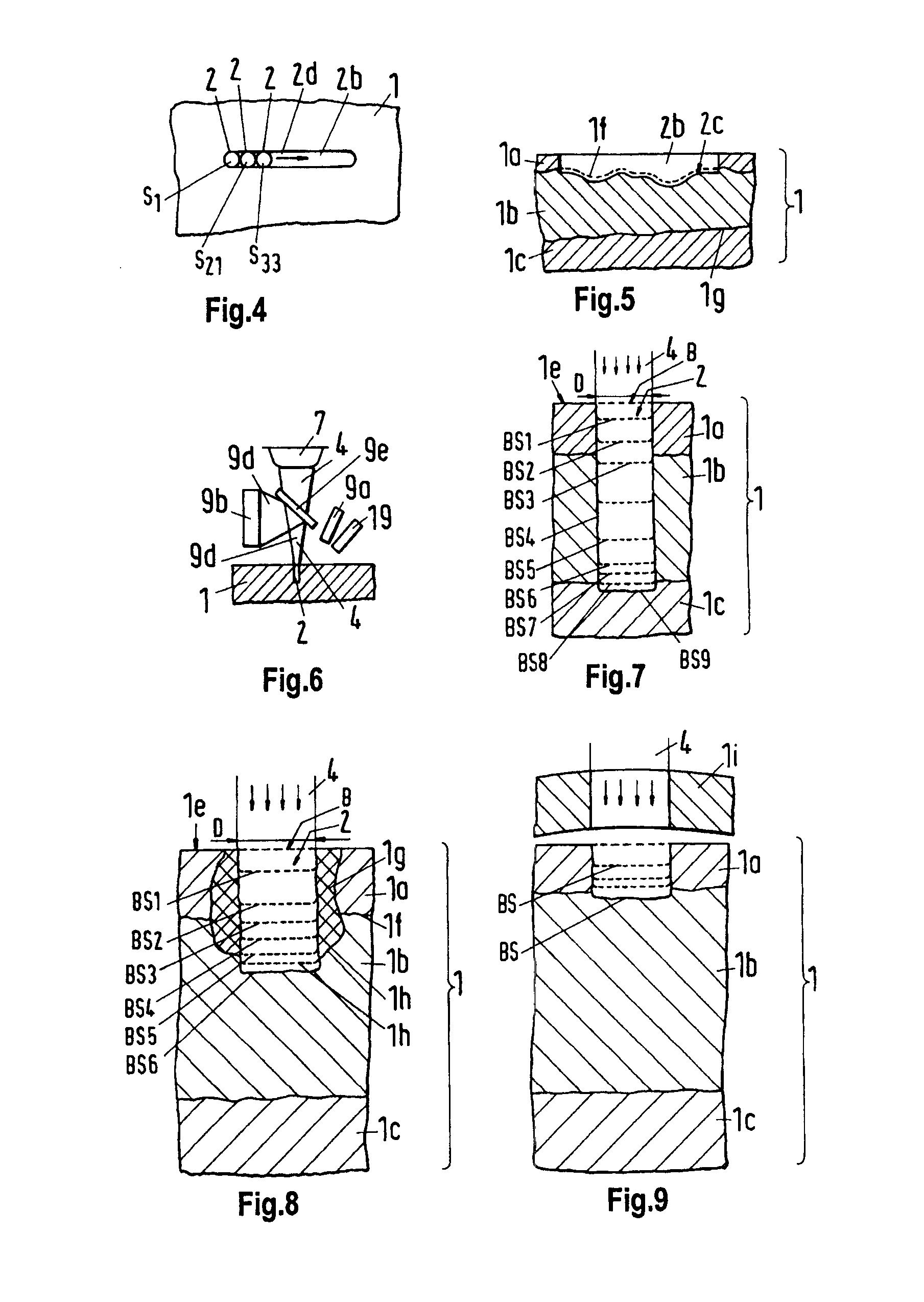Laser Device and Method for Ablating Biological Tissue
a biological tissue and laser technology, applied in the field of laser devices and biological tissue ablation methods, can solve the problems of inability to analyze a characteristic of inside the pore, inability to easily and quickly distinguish different tissue properties, and inability to easily and quickly analyze tissue properties, so as to prevent pain or bleeding, fast and inexpensive device and method, reliably, fast and accurate detection of different skin layers
- Summary
- Abstract
- Description
- Claims
- Application Information
AI Technical Summary
Benefits of technology
Problems solved by technology
Method used
Image
Examples
Embodiment Construction
[0050]FIG. 1 shows an ablator 10, which is a laser device 10 for ablating a biological tissue 1, comprising a laser source 7 that is configured to emit a laser beam 4, comprising optics 8a configured to modify the laser beam 4 such that the laser beam 4 has a diameter of preferably less than 1 mm, comprising a controller 11 that is configured to control the laser source 7 to emit the laser beam 4 to create an ablation 2 in the biological tissue 1, wherein a sensor 19 is configured to receive back scattered light BSL from the biological tissue 1. The ablator or laser device 10 disclosed in FIG. 1 comprises a hand piece 10a wherein the laser source 7 and the sensor 19 is arranged, and further comprises electronics 10b, in particular the controller 11, which is connected with a tissue controller 18 and an input-output device 15 or interfaces 15. The hand piece 10a and the electronics 10b communicate through connecting wires 11a, 18b. In a further preferred embodiment, parts 10a and 10b...
PUM
 Login to View More
Login to View More Abstract
Description
Claims
Application Information
 Login to View More
Login to View More - R&D
- Intellectual Property
- Life Sciences
- Materials
- Tech Scout
- Unparalleled Data Quality
- Higher Quality Content
- 60% Fewer Hallucinations
Browse by: Latest US Patents, China's latest patents, Technical Efficacy Thesaurus, Application Domain, Technology Topic, Popular Technical Reports.
© 2025 PatSnap. All rights reserved.Legal|Privacy policy|Modern Slavery Act Transparency Statement|Sitemap|About US| Contact US: help@patsnap.com



